WILLIAM M. LEOGRANDE, Professor of Government, American University, Washington, DC 20016
World Politics Review, November 16, 2016
Original Article: Which Trump Will Cuba Have to Contend?
WILLIAM M. LEOGRANDE, Professor of Government, American University, Washington, DC 20016
World Politics Review, November 16, 2016
Original Article: Which Trump Will Cuba Have to Contend?
CNBC.com
Ted Henken, November 14, 2016
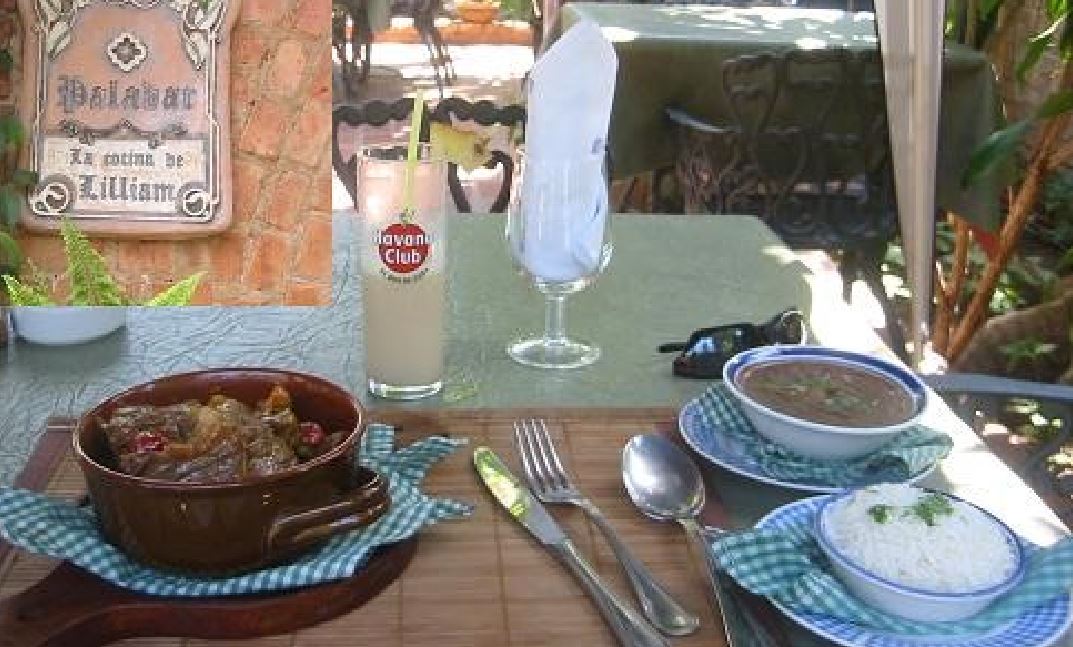 One example of freer markets in Cuba isthe Paladar La Cocina de Lilliam (Lilliam’s Kitchen), a home-based restaurant garden where President Jimmy Carter ate on his first visit to Cuba in 2002. Photo: Ted Henken
One example of freer markets in Cuba isthe Paladar La Cocina de Lilliam (Lilliam’s Kitchen), a home-based restaurant garden where President Jimmy Carter ate on his first visit to Cuba in 2002. Photo: Ted Henken
While Americans have been reeling over the shocking outcome of our presidential election, Cubans are experiencing perhaps even greater vertigo as a result of the surprise victory of Donald Trump.
As the saying goes, “When the U.S. sneezes, the rest of the world gets a cold.” Or perhaps the old Mexican adage is more appropriate to the situation Cubans find themselves in: “Poor Mexico! So far from God, but so close to the United States!”
Cubans went from a largely acrimonious relationship with the U.S. prior to December 2014, to one of unprecedented “hope and change” during the past 22 months under bilateral efforts to achieve diplomatic normalization between the erstwhile adversaries, to one of great trepidation and uncertainty over the past week given the president-elect’s campaign promise to “cancel Obama’s one-sided Cuban deal.” President Raúl Castro perfectly captured the moment’s ambivalence for Cuba by quickly sending the president-elect a brief note of congratulations while simultaneously ordering a five-day military mobilization.
In my more than half-dozen trips to the island over the past year, I have noted a palpable, ebullient expectation among Cubans for a better, more prosperous future under Obama’s “new rules” of engagement. This was especially pronounced among Cuba’s emergent entrepreneurial class, which includes old school cabbies in their even older school American cars, hip app designers in Cuba’s surprising tech start-up scene, and some of the many restaurateurs behind the island’s surging circle of “paladares” (private, home-based restaurants) which now number more than 1,800.
This hard-won hope was also born of Cuba’s own “new rules” introduced in late 2010 under President Raúl Castro aimed at expanding the island’s long-suppressed private sector. However, I also found that most entrepreneurs were under no illusions that the Cuban government would be fully lifting its own counter-productive “auto-bloqueo” or internal embargo against grass-roots entrepreneurial innovation and inventiveness any time soon.
This sense of rising hope inside Cuba reached its climax in Obama’s brilliant deployment of soft power during his historic state visit to the island in March 2016. Many Cubans identified with this youthful, optimistic, and eloquent African-American family man endowed with both a sense of history and of humor much more than with their own waxworks of old white ideologues.
However, Cuba’s old guard realized that Obama’s charm offensive had begun to fatally undermine their own authority and undercut their long-effective use of the U.S. boogeyman as a scapegoat for their own economic failures and as a justification for their continued political authoritarianism. In response, the Cuban leadership has spent the past eight months constantly reminding Cuban citizens of the continued U.S. existential threat to Cuban sovereignty under the Revolution and simultaneously dashing their hopes for a better, more open and prosperous future by stepping up detentions of peaceful political opponents and independent journalists and slowing economic reforms to a manageable trickle.
The clearest example of the Cuban government’s efforts to lower expectations has come on the economic front. First, April’s Seventh Party Congress included no new resolutions about deepening or expanding much needed market-oriented reforms apart from a vague reference to studying the possibility of granting status as legal businesses to a portion of the half-a-million strong micro-enterprise sector. Nothing has come of this idea in the intervening seven months.
Second, price controls have been reimposed in the private agriculture and transportation sectors, reducing incentives for greater production. Third, this past summer saw the government scale back economic growth estimates for 2016 to under 1 percent and impose severe energy saving and cost-cutting measures across the state sector due to a liquidity crisis and the Venezuelan debacle.
Finally, the issuing of new licenses for Havana’s surging private, home-based restaurant sector were suspended for six weeks in the fall in order to root out legal violations such as providing bar services and live entertainment without permission, obtaining supplies from black-market sources, staying open past the state-imposed 3 a.m. closing time, and tax evasion. Some have even been accused of doubling as sites of prostitution and drug trafficking and shut down.
show chapters
However, the government has so far not delivered on its promise to provide affordable access to wholesale markets for these restaurateurs nor has it allowed them to legally import supplies from abroad or expand beyond the arbitrary limit of 50 place settings. Moreover, the tax system for the private sector provokes “creative bookkeeping” by imposing a rigid 40-percent deduction limit for business often burdened by much higher supply costs due to Cuba’s environment of chronic scarcity. It also imposes a labor tax on any more than five employees disincentivizing legal hiring.
To add insult to this injury, the moribund network of their state-run competitor restaurants do enjoy access to wholesale markets and suffer no seating or size restrictions or employment taxes. Especially frustrating for Cuban entrepreneurs is the fact that this emphasis on law and order comes in the context of shrinking output in the state enterprise sector, a looming emigration crisis with record numbers of new Cuban arrivals in the U.S., and in the midst of a tourism boom that the state hospitality sector has proven unable to absorb.
As Cubans like to say: “¡No es fácil!” (It ain’t easy!)
President-elect Donald Trump could follow the recommendation of some Congressional Republicans by adding his own isolationist wind to the already full sails of the Cuban government’s rigid control that attempts to keep Cuban entrepreneurs in their frustrated and impoverished places. Or he could send Cuba’s business pioneers a message of support and solidarity as they attempt to build a more prosperous future by continuing America’s historic opening to Cuba that aims to empower the island’s mergent capitalists through engagement, investment, and trade.
For someone who campaigned as a anti-politician who would bring a hard-nosed business sense to Washington, Cuba presents Trump with a golden opportunity to place economic pragmatism and the tangible benefits it would bring to citizens of both countries over the out-dated and counterproductive Cold War ideology that undergirds the embargo.
Commentary by Ted A. Henken, an associate professor of Sociology and Latin American Studies at Baruch College, City University of New York and co-author with Arch Ritter of the book “Entrepreneurial Cuba: The Changing Policy Landscape.” He is a past president of the Association for the Study of the Cuban Economy (2012-2014). Read his blog and follow him on Twitter @ElYuma.
10/14/2016
Original Document Here
For a Spanish translation of the Treasury and Commerce Fact Sheet, please click here.
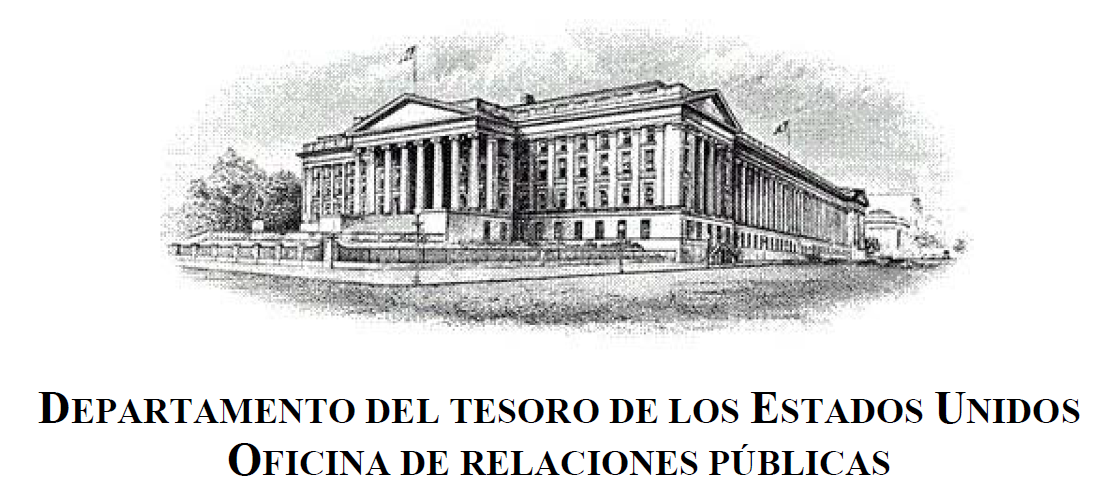 AMENDMENTS EXPAND VENUES FOR SCIENTIFIC COLLABORATION, FACILITATE INCREASED HUMANITARIAN SUPPORT, AND BOLSTER TRADE AND COMMERCIAL OPPORTUNITIES
AMENDMENTS EXPAND VENUES FOR SCIENTIFIC COLLABORATION, FACILITATE INCREASED HUMANITARIAN SUPPORT, AND BOLSTER TRADE AND COMMERCIAL OPPORTUNITIES
WASHINGTON – Today, the Department of the Treasury’s Office of Foreign Assets Control (OFAC) and the Department of Commerce’s Bureau of Industry and Security (BIS) are announcing new amendments to the Cuban Assets Control Regulations (CACR) and Export Administration Regulations (EAR), respectively. These amendments help create more economic opportunity for Cubans and Americans, further implementing the direction toward Cuba that President Obama laid out in December 2014. The changes will take effect on October 17, 2016, when the regulations are published in the Federal Register.
“President Obama’s historic announcement in December 2014 charted a new course for a stronger, more open U.S.-Cuba relationship,” said Treasury Secretary Jacob J. Lew. “The Treasury Department has worked to break down economic barriers in areas such as travel, trade and commerce, banking, and telecommunications. Today’s action builds on this progress by enabling more scientific collaboration, grants and scholarships, people-to-people contact, and private sector growth. These steps have the potential to accelerate constructive change and unlock greater economic opportunity for Cubans and Americans.”
“These amendments will create more opportunities for Cuban citizens to access American goods and services, further strengthening the ties between our two countries,” said U.S. Secretary of Commerce Penny Pritzker. “More commercial activity between the U.S. and Cuba benefits our people and our economies.”
These changes are intended to expand opportunities for scientific collaboration by authorizing certain transactions related to Cuban-origin pharmaceuticals and joint medical research; improve living conditions for Cubans by expanding existing authorizations for grants and humanitarian-related services; increase people-to-people contact in Cuba by facilitating authorized travel and commerce; facilitate safe travel between the United States and Cuba by authorizing civil aviation safety-related services; and bolster trade and commercial opportunities by expanding and streamlining authorizations relating to trade and commerce. These amendments also implement certain technical and conforming changes. OFAC and BIS are making these amendments in support of the process of normalizing bilateral relations with Cuba.
To see the Treasury regulations, which can be found at 31 Code of Federal Regulations (CFR), part 515, please see here. To see the Commerce regulations, which can be found at 15 CFR parts 730-774, please see here. Significant changes in the revised Treasury and Commerce regulations are outlined below:
Health-related Transactions –
Expanding Opportunities for Scientific Collaboration and Access to Medical Innovations
Joint medical research. OFAC is issuing a new authorization that will allow persons subject to U.S. jurisdiction to engage in joint medical research projects with Cuban nationals. This authorization will encompass both non-commercial and commercial research.
Humanitarian-related Transactions –
Providing Additional Grant Opportunities and Strengthening Cuban Infrastructure
Travel-related Transactions –
Supporting People-to-People Contact by Facilitating Authorized Travel and Commerce
Civil Aviation –
Supporting International Aviation and Passenger Safety
Trade and Commerce –
Bolstering Trade and Commercial Opportunities and the Growth of Cuba’s Private Sector
Transit of cargo. BIS will generally authorize air cargo to transit Cuba, complementing an existing general authorization for cargo transiting Cuba aboard vessels.
JEFF MASON and JEFFREY DASTIN
Globe and mail, Reuters, Thursday, Jul. 07, 2016 3:44PM EDT
Original Arcicle: FLIGHTS TO CUBA FROM THE U.S. 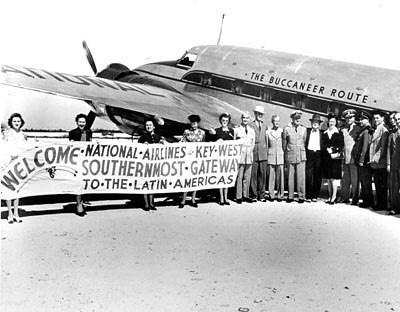
The United States has tentatively approved flights on eight U.S. airlines to Havana as early as this fall, with American Airlines Group Inc. receiving the largest share of the limited routes, the U.S. Transportation Department said Thursday.
The decision, coming about a year after the United States and Cuba re-established diplomatic relations, includes 35 flights per week on American, the biggest U.S. airline in Latin America by flights. Its rival for Caribbean travel, JetBlue Airways Corp., was granted 27.
The department expects to reach a final decision on the routes later this summer after reviewing any objections. It also recommended flights to Havana on Delta Air Lines Inc., United Continental Holdings Inc., Southwest Airlines Co., Alaska Air Group Inc., Spirit Airlines Inc. and Frontier Airlines Inc.
The flights to Cuba’s capital would be the latest step in bringing the former Cold War foes closer together.
Last month, the Transportation Department gave airlines the green light to schedule flights to other cities in Cuba for the first time in decades. Until now, air travel to the Communist-ruled island has been limited to charter services.
Selecting the carriers for the Havana flights created a challenge for the Obama administration. Airlines applied for nearly triple the 20 daily round-trips that Cuba and the United States agreed to allow.
“The proposed slate of airlines will ensure service to areas of substantial Cuban-American population, as well as to important aviation hub cities,” U.S. Transportation Secretary Anthony Foxx said.
“The department also sought to offer the public a wide array of travel choices in the type of airline such as network, low-cost and ultra low-cost carriers.”
Miami and Fort Lauderdale, Fla. which have the biggest Cuban-American communities in the United States, received the most flights, at 83 a week among six airlines. American won one-third of flights from south Florida. This may give it a leg up over rivals because it can offer corporate customers more convenient connections through Miami.
“It’s enough to make it a viable business-traveler schedule,” said aviation industry consultant Robert Mann.
Over time, U.S. airlines anticipate a bigger payout from Cuba than is typical for Caribbean destinations. Strong demand will come from Cuban-Americans visiting relatives and executives travelling in business class to evaluate commercial opportunities, experts said.
“These flights open the door to a new world of travel and opportunities for our customers,” said Oscar Munoz, United’s chief executive officer. United will fly from Newark, N.J., and Houston under the proposal.
Atlanta, Charlotte, N.C., Los Angeles, New York, Orlando and Tampa will also offer non-stop service.
While a ban on tourism to Cuba remains part of U.S. law, President Barack Obama has authorized exceptions. U.S. citizens that meet one of 12 criteria, such as taking part in educational tours, can now visit Cuba. The U.S. House of Representatives was due to vote as early as Thursday on a spending bill amendment that would essentially lift travel restrictions to Cuba for a year.
American said it hopes to begin Havana service in November. Its shares rose 3.3 per cent while JetBlue shares added 1.7 per cent. Southwest rose 1.7 per cent and Delta was up 2.2 per cent.
Cubana de Aviación Ilyushin Il-96-300; What Share of the US Tourism Market for Cubana?
May 18, 2016 7:14 PM
Miami Herald: http://www.miamiherald.com/news/nation-world/world/article78499207.html#storylink=cpy
By Franco Ordoñez
Since President Barack Obama left Cuba, the Castro government has carried out a campaign to diminish the importance of the historic visit, according to Cuban human rights activists and U.S. officials.
Obama’s trip to Havana in March – part of ongoing efforts to normalize relations with Cuba –made him the first sitting U.S. president to visit the island in nearly 90 years. Activist Antonio Rodiles described how the Cuban government had launched a media push criticizing the U.S. government and praising communist leadership.
“They were trying to encapsulate – to close or create a bubble – around the visit. And they started to talk about the communist congress party. A lot of articles attacked the president’s position,” Rodiles said Wednesday during a panel discussion in Washington.
The dissident leader said, however, that Obama’s message still had gotten through to the Cuban people. Rodiles joined former Ambassador Roger Noriega, the former assistant secretary of state for Western Hemisphere affairs at the State Department, for a discussion on human rights in Cuba at the American Enterprise Institute research center in Washington.
Rodiles described the situation in Cuba as a fight over the public space in that country. And he doesn’t think Obama demanded enough on human rights, allowing the Cuban government to give the “illusion” of change while it works to transition power to a younger generation of Castros.
“This is something crucial for me and many people who are working on this, to show to the whole international community, to show to the Cuban people, to show to everybody that if the Castro family is there, nothing is going to change,” Rodiles said.
Since embarking on cozier relations with Cuban leader Raúl Castro last year, the Obama administration has been eliminating stiff regulations on travel and commerce. It has expanded opportunities for Americans to visit the island, but the administration has been criticized for not doing enough to fight human rights.
The Cuban Commission for Human Rights and National Reconciliation, a group that tracks human rights and political repression in Cuba, reported more than 8,600 politically motivated detentions in 2015, a 315 percent increase from five years ago. In the first two months of this year, there had already been more than 2,500 arrests.
Rodiles said more people were willing to speak out about their frustrations as they saw an opening for change, but he said it had also given the Cuban government a sense of legitimacy.
It’s important to keep the focus on Cuba while Obama remains in office, Noriega said. Obama placed a bet that this opening will bring about change. Noriega, who has raised concerns about the opening of relations, said momentum was beginning to slow as multinationals reported that there was little investment opportunity.
He pushed Obama to focus more on human rights:
“You can’t separate economic rights and political freedoms, because the pillar of both of them is the rule of law. If you don’t have the rule of law, you’re not going to be able to create the economy they need.”
Rodiles praised parts of the president’s visit. He thanked Obama for spending so much time with opposition leaders. The president’s speech, he said, was the first time in 60 years for many Cubans to hear someone talk about human freedoms.
But he said the United States needed to decide who really were its friends:
“The people are pushing and facing the Cuban regime. We’re the friends of the democracy world. And we’re taking the risk for that. We need your support.”
JOC, MAY 19, 2016
Greg Miller
Original Article: http://www.joc.com/port-news/international-ports/cuba-port-plans-be-transshipment-hub-after-us-lifts-embargo_20160518.html
Cuba’s Mariel container terminal has already planned its transformation into a major transshipment hub after theU.S. trade embargo ends, according to TC Mariel General Director Charles Baker.
In an address to the Caribbean Shipping Association Executives’ Conference held near Port Canaveral, Florida, Baker described surging growth at TC Mariel, its short- and long-term expansion plans and strategy to diversify beyond domestic cargo into transshipment.
The PSA International-operated terminal opened in January of 2014. Throughput at Mariel grew 35 percent in 2015, reaching 330,000 twenty-foot-equivalent units, and is up 29 percent year-to-date this year as a result of Cuba’s “booming” tourism trade, Baker said.
The container terminal has four gantry cranes, 2,296 feet of quay and a capacity of roughly 800,000 TEUs annually. In the next two to three years another 984 feet of quay will be added so that two neo-Panamax ships may berth simultaneously. Mariel’s channel, deep enough for Panamaxes at present, will be dredged to neo-Panamax depths by 2017. Over the longer term the terminal will add another 5,577 feet of quay and boost annual capacity to 3 million TEUs. There are also plans to add general cargo, dry bulk and roll-on, roll-off terminals to the port.
Much hinges on Mariel’s location in Cuba’s far northwest.
Skeptics of the port have argued that this location is unsuitable to transshipment because the east-west services that pass through the Caribbean on their way to the U.S. pass by Cuba’s southeast corner, near Guantanamo Bay. They believe the additional transit time to Mariel would be too great.
Baker, however, believes that Mariel can use its location to its advantage.
He said Mariel aims to be the first port of call for neo-Panamax container ships after passing through the Panama Canal to the U.S. East Coast, with feeder services providing direct connections from Mariel to Gulf Coast ports in Tampa, Florida; Mobile, Alabama; New Orleans, Louisiana; Houston, Texas and Altamira, Mexico.
“It will be a challenge to attract the bigger vessels (that will serve the region after Panama Canal expansion) to circle into the U.S. Gulf, because there would not be enough time in their schedules,” he said, explaining why carriers would prefer to use a hub to serve Gulf ports. Dropping cargo off in Mariel and feedering it to Gulf ports would also be more attractive to shippers, given “vastly improved” transit times, he said. “Today, to ship to Mobile, you’ll have to wait for the vessel to sail in and out of Houston and New Orleans before it gets there.
“When we talk to the carriers and the ports, they do recognize (the benefits of) our geography, but they also recognize very clearly that the U.S. embargo stands in the way of the opportunity we have here,” he said.
Although the embargo is the biggest hurdle to Mariel increasing its transshipment business, another issue is current U.S. law, which dictates that a vessel regardless of flag cannot call at a U.S. port within 180 days of calling in Cuba. This effectively prevents transshipment from Mariel because any vessel deployed for feedering would lose the flexibility to call in the United States for an extended period, and more importantly, mainline vessels cannot sail to final destinations in the United States after dropping off transshipment cargo (bound for non-U.S. destinations) in Mariel.
A repeal of that 180-day rule would be “tremendous” for TC Mariel, Baker said. “It would allow us to enter the international transshipment market.” Baker recently traveled to Washington, D.C., to meet with Congressional staffers and push for an end to the rule.
TC Mariel also benefits from its location within the enormous Special Development Zone of Mariel, or ZED Mariel. “This zone is very, very important and very high on the agenda for the Cuban government,” said Baker. “It has a special set of laws and regulations that are very advantageous to investors and it is the first part of Cuba that allows 100 percent foreign ownership. It is 465 square kilometers (180 square miles) in size, which is half the landmass of Singapore. It is probably the largest greenfield industrial development zone in the world — and it really is green. There is literally nothing there today,” he said, noting how rare it is to have a major port adjacent to a huge expanse where logistics, assembly, industrial and warehousing facilities can be developed without space restrictions.
Interest in ZED Mariel continues to grow and more investments are being made.
“There is a lot of European interest now because they have realized that if the embargo disappears, they will be facing intense pressure in a market where they’ve been well protected from U.S. exporters for the last 54 years,” said Baker. “Some of them are realizing that the way to maintain their market share is to plant themselves in Cuba (before the end of the embargo). They also realize that going forward, there will be a wonderful opportunity to export to the world’s largest consumer market, only 90 miles away.”\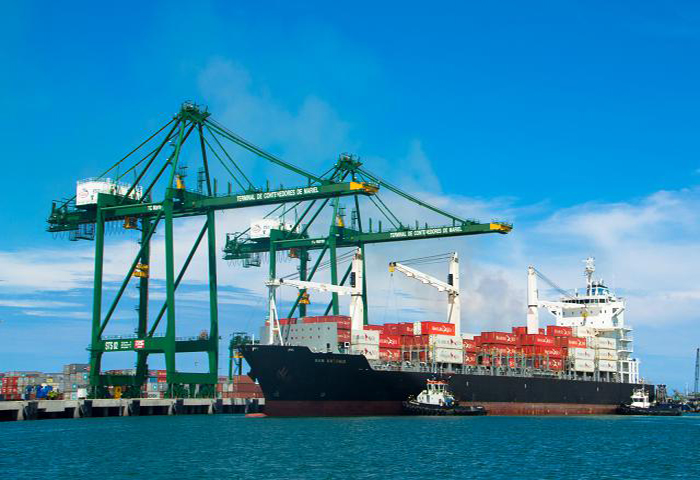
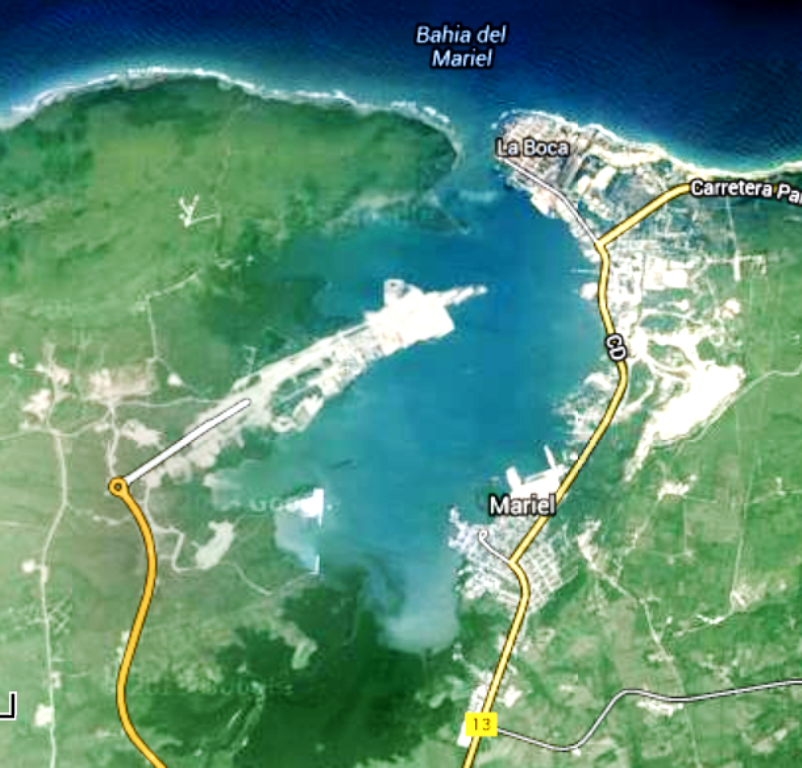
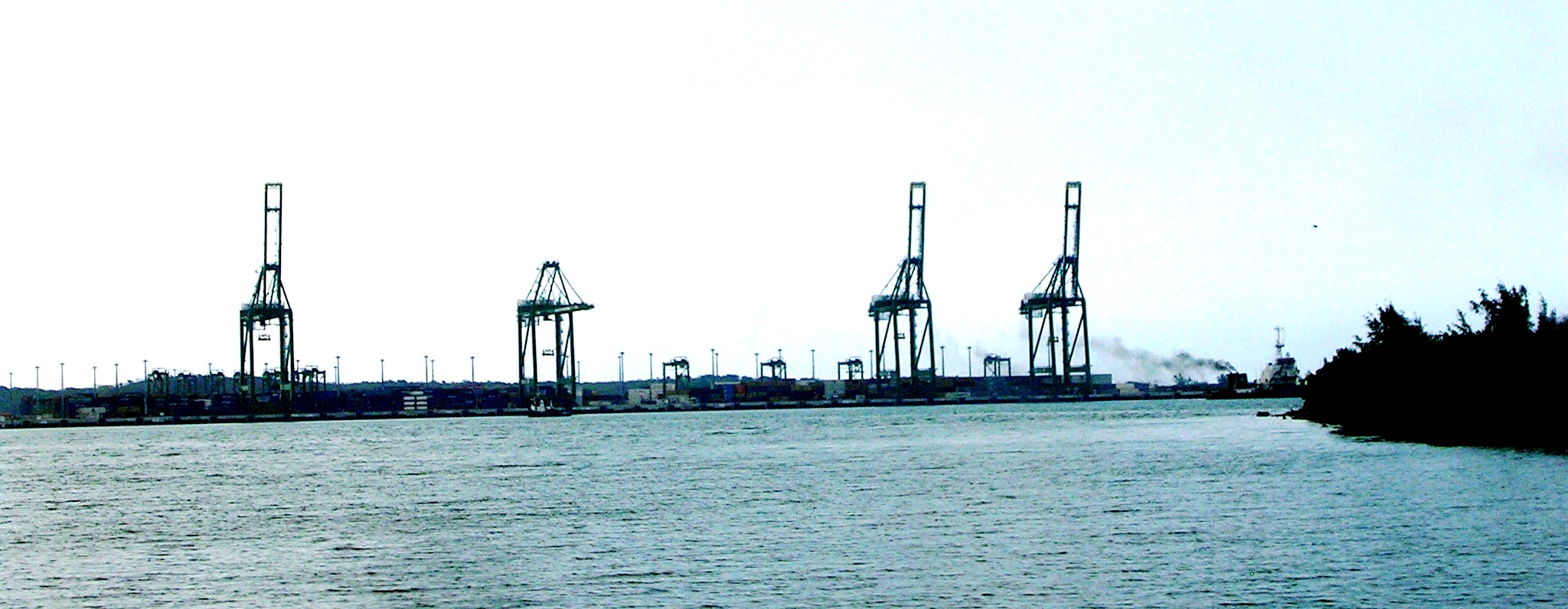
By Mimi Whitefield, Miami Herald, 26 April 2016
Original Article: Alabama Tractors in Cuba?
An Alabama tractor company angling to become the first American business in more than a half century to set up manufacturing operations in Cuba is about midway through the approval process.
Cleber, based in Paint Rock, Alabama, outside Huntsville, wants to assemble small tractors in Cuba’s Mariel Special Economic Development Zone for use in Cuba and beyond. The simple tractor model that Cleber wants to produce is called Oggún in homage to the Santeria god of iron, tools and weapons, and it’s designed for small-scale farming.
Cleber is the first U.S. company to receive permission from the U.S. Office of Foreign Assets Control and the Commerce Department for a manufacturing project on the island since the Dec. 17, 2014 rapprochement between the two countries.
When President Barack Obama visited Cuba in March, he said that Cleber “will be the first U.S. company to build a factory here in more than 50 years.”
But Saul Berenthal, a Cuban-American who is a co-founder of the company and its chief operating officer, said it’s not a done deal yet. The Cubans still haven’t given final approval for the project. “I’d say we’re in the middle of the process,” Berenthal said. “Nothing is done until the fat lady sings.” I’d say we’re in the middle of the process. Nothing is done until the fat lady sings.
As overtures to Cuba by American businesses have picked up since the thaw, Berenthal said, “There are a lot of people in Cuba who are very busy and that tends to slow things down.” All documents and manuals also must be translated into Spanish, he said, and there’s plenty of other red tape.
But Berenthal, who was in Cuba two weeks ago for more talks, said he’s hopeful Cuban approval could come within the next 90 days. Cleber has been told it will take about six months to get a factory up and running. Initially, Cleber plans to have 10 employees and expects to add two more people annually as production ramps up.
From just serving the Cuban market, Cleber would like to eventually expand and export to other Central American and South American markets covered by Cuban trade agreements.
Berenthal and co-founder Horace Clemmons set up Cleber shortly after the rapprochement was announced with the idea of producing small-scale tractors particularly suited for the Cuban market.
Many Cuban campesinos still use livestock in the fields or aging tractors, Berenthal said. There are about 60,000 tractors in use in Cuba today, but many of them are from the 1980s, and 500 to 1,000 are lost every year because they are cannibalized for parts or simply stop working, he said.
The simple design of the Oggún, which uses parts that are widely available, also is in keeping with more sustainable agriculture.Cuba began a transition to more sustainable agricultural practices in the 1990s because it didn’t have much choice after the collapse of its benefactor, the old Soviet Union. With supplies of pesticides, fertilizers and oil scarce, Cuba began breaking up large state farms and Cuban producers began turning to organic farming techniques. But production has fallen.
Getting food production back on track is a Cuban priority. “Cuba’s mission is to be able to replace $2 billion in agricultural imports,” Berenthal said. “There’s also the pressure for more food from the tourism industry, which is increasing tremendously.”
“Not often in life do we get the opportunity, through simple efforts on our part, to make a difference in the lives of many. This venture represents that opportunity, to show the Cuban people the benefits of expanded commerce opportunities with the United States,” Clemmons said.
Even though new rules by the Obama administration make it easier to trade with and do business with Cuba, the embargo is still in effect and some U.S. projects require special approvals.
“There will be opportunities in Cuba. There are few places in the world with a real white space,” said Maguerite Fitzgerald, a partner at The Boston Consulting Group. But doing business with Cuba, she added, “isn’t a fast game or one that’s played with traditional rules.”
Berenthal said Cleber is prepared to let the Cuban approval process run its course. But if it drags on too long, Cleber plans to begin assembling Oggún tractors in Alabama and taking orders.
“We’re going to build tractors. We’d like to do it in Cuba,” he said. Cleber thinks Cuba’s Special Economic Development Zone, a 180-square-mile complex under development 28 miles west of Havana, is the place to do it. The Mariel zone wants to attract foreign investment in clean, sustainable projects with export potential.
The Original Plowing System Soviet Tractor
Soviet Tractor
The New Tractor: Appropriately Small-scale for Small Farms?
By Frank Jack Daniel and Nelson Acosta
Original Article: Communists Defend Ideology
Reuters, Mon Apr 18, 2016 3:59pm EDT
HAVANA U.S. President Barack Obama’s visit to Communist-led Cuba was an “attack” on its history and culture aimed at misleading a new business class, Foreign Minister Bruno Rodriguez said on Monday, the latest sign of blow-back after the ground-breaking trip last month.
“In this visit, there was a deep attack on our ideas, our history, our culture and our symbols,” Rodriguez said at the Communist Party congress.
Cuban leaders have hardened language against the United States since Obama became the first U.S. president to visit the island in 88 years, with Fidel Castro accusing him of sweet-talking the people.
President Raul Castro referred to the United States as “the enemy” in the opening speech of the party congress over the weekend and told Cubans to be alert to U.S. attempts to weaken the revolution.
The congress, held every five years, must make decisions about the future of Cuba’s elderly leadership and the progress of market-style economic reforms adopted in 2011 that allowed more small businesses.
The measures have been only partially implemented, amid resistance from hard-liners who distrust market economics and fear detente with the United States at a time when Cubans are increasingly vocal about their needs.
“The harsh rhetorical push-back by the ideological wing of the Communist Party suggests their heightened sense of vulnerability,” said Richard Feinberg, a former national security adviser to U.S. President Bill Clinton.
Rodriguez accused Obama of coming to “dazzle” the private sector, highlighting concern U.S. promises to empower Cuban entrepreneurs were aimed at building opposition to the single-party system in office since 1959.
“Socialism and the Cuban revolution are the guarantees that there can be a non-state sector that is not that of big North American companies,” he told state television.
Cuba has struck deals with U.S. companies such as hotel chain Starwood (HOT.N) and is in talks with others including Google-parent Alphabet (GOOGL.O). On May 1, Carnival (CCL.L) is to become the first U.S. cruise company to sail to Cuba, but the trip is in doubt over a ban on Cuban-Americans sailing.
Cuba believes “the interest in the country of 11.3 million and its tourism potential will overshadow any political decisions,” said John Kavulich, head of the U.S.-Cuba Trade and Economic Council, a New York-based non-profit organization.
The United States and Cuba re-established diplomatic relations after Castro and Obama announced in December 2014 the two countries were seeking to normalize ties.
Despite the rhetoric, U.S. musicians Smokey Robinson, Usher and Dave Matthews were in Havana on Monday as part of a delegations representing Obama’s arts and humanities committee. A group of U.S. architects also visited on Monday.